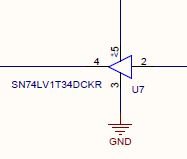Hello,
The company I work for uses an nRF52840 PCBA for one of its project. During production, the board will be placed under test using a custom-built fixture. Due to the nature of our setup and testing procedure, there was found to be a step where a positive voltage (~2V) could be present on a GPIO pin when the rest of the board had no power (VDD = 0V). Our electrical engineers are currently brainstorming methods of altering the fixture hardware to accommodate this, as they believe it can damage the chip. Though I trust their knowledge, I could not find further explanations or warnings on this in the product specification. Is anyone able to provide more information regarding this?
Thanks


